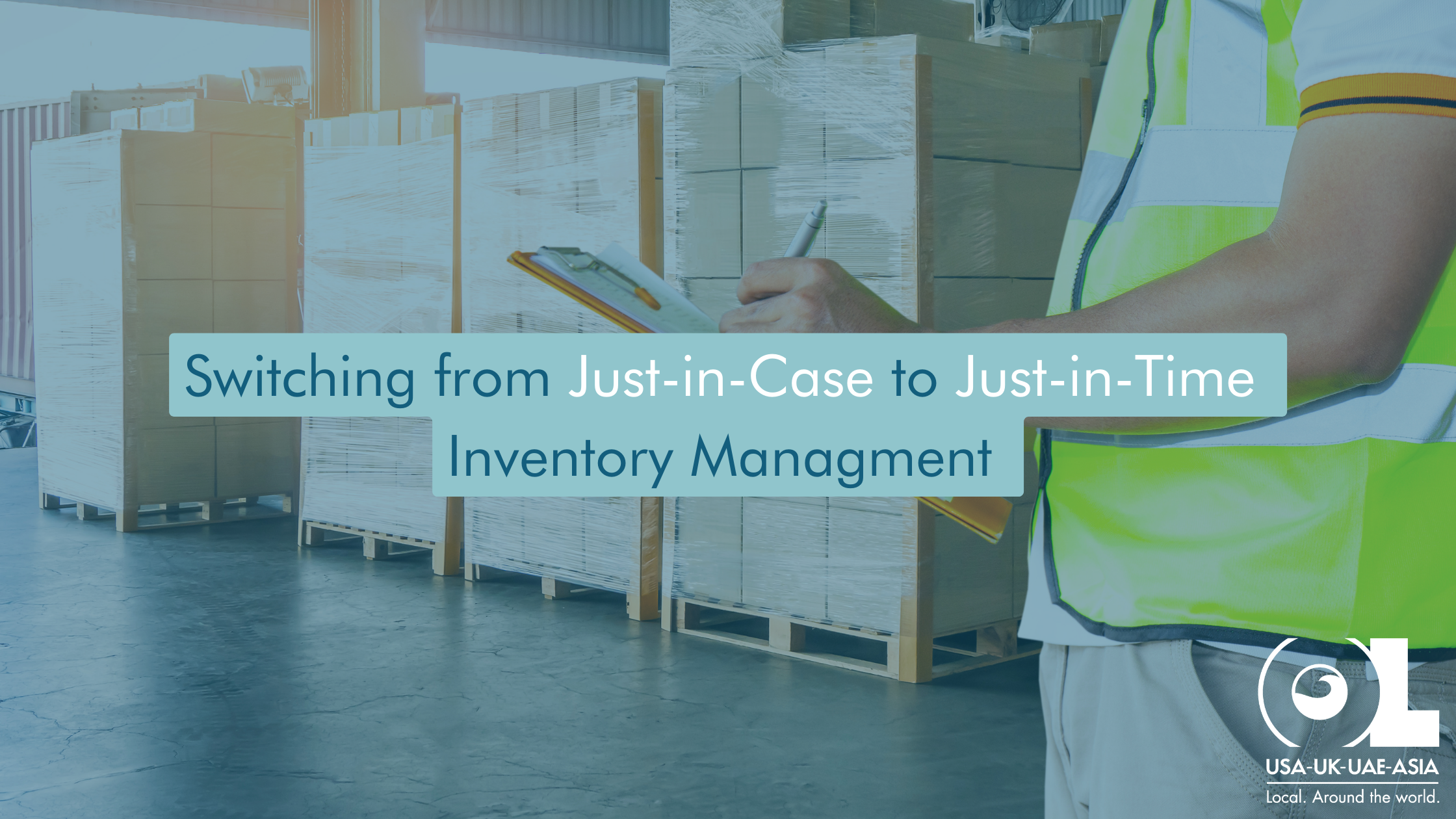The global business landscape experienced seismic shifts due to the unprecedented disruptions caused by the COVID-19 pandemic. The once-predictable currents of supply and demand were replaced by turbulent waves of uncertainty, challenging even the sturdiest of supply chains. Third-Party Logistics (3PL) providers have recognized the trials faced by businesses during these times of upheaval. This blog post delves into a transformative approach—the transition from traditional just-in-case inventory management to the agile realm of just-in-time strategies. Join us as we explore how partnering with 3PL providers can lead to a more resilient, responsive, and cost-effective supply chain.
Understanding Just-in-Case and Just-in-Time Inventory Management
At the core of the matter lies a fundamental dichotomy: just-in-case versus just-in-time inventory management. The former, once a trusted strategy, involved stockpiling surplus inventory to guard against potential disruptions. However, as the pandemic revealed, excess inventory introduced a new set of vulnerabilities—from storage costs to the risk of obsolescence. In contrast, the allure of just-in-time inventory management lies in its ability to maintain leaner inventories while ensuring timely delivery, minimizing waste, and capitalizing on market shifts.
The COVID Shipping Crunch and Supply Chain Disruptions
The outbreak of the COVID-19 pandemic unleashed a series of unprecedented disruptions that rippled across global supply chains. What was once a landscape characterized by relative stability and well-established practices suddenly morphed into a challenging environment fraught with uncertainty. The very foundations of supply chain management were put to the test, revealing vulnerabilities that had remained dormant during times of calm.
Central to this upheaval was the pandemic-induced shipping crunch, a phenomenon that served as a clarion call for businesses that had long relied on the just-in-case inventory management approach. This strategy, once a hallmark of prudence, entailed stockpiling surplus inventory as a protective measure against potential disruptions. However, as the pandemic’s impact reverberated throughout the logistics world, this tried-and-true approach revealed its limitations with resounding clarity.
A complex interplay of factors came into play, forming a tangled web that strained the traditional supply chain structure. Port closures, triggered by health and safety measures, crippled the smooth flow of goods across borders. Labor shortages, stemming from lockdowns and restricted movement, hampered the efficiency of loading and unloading operations. These setbacks, coupled with unpredictable shifts in consumer behavior driven by uncertainty and changing economic circumstances, culminated in a perfect storm that disrupted supply chains on a global scale.
The pandemic-induced turmoil underscored a critical flaw in the just-in-case inventory management strategy: maintaining excessive stockpiles as a safety net could no longer guarantee operational stability in the face of such multifaceted disruptions. Suddenly, the safety net transformed into a quagmire, tying up capital, increasing storage costs, and ultimately failing to provide the level of security it had promised.
In this tumultuous environment, the business landscape was in a state of constant flux. Market dynamics that had previously shown some level of predictability now shifted with unprecedented swiftness. Consumer preferences evolved as lifestyles and priorities changed, and the demand for certain products surged while others dwindled. The resulting volatility accentuated the challenges posed by a just-in-case approach, where static stockpiles were ill-equipped to accommodate these rapid shifts in demand.
The pandemic-induced shipping crunch was a wake-up call, echoing through boardrooms and supply chain management meetings. It forced a reevaluation of established norms and prompted businesses to consider more agile, responsive, and innovative approaches to inventory management. The concept of just-in-time inventory management, which had long been discussed and debated, suddenly gained newfound urgency and relevance.
Businesses realized that the traditional approach was no longer tenable in this dynamic landscape. The experience of navigating the pandemic-induced shipping challenges was a stark reminder that supply chains needed to be agile, adaptable, and able to respond rapidly to unforeseen disruptions. It was clear that a transition was necessary—a transition that would redefine inventory management strategies and rely on the expertise of partners who specialize in orchestrating complex logistics scenarios.
Enhancing Supply Chain Visibility
A critical facet where 3PL expertise shines is in enhancing supply chain visibility. Employing advanced technology, 3PL providers offer the capability to track shipments and inventory in real-time. The invaluable insights gained from this real-time visibility empower businesses to transition to just-in-time inventory management seamlessly. Equipped with accurate, up-to-the-minute data, businesses can navigate the intricate interplay of supply and demand with precision.
Mitigating Risk and Ensuring Continuity
Risk looms as a constant presence in the supply chain realm. The transition to just-in-time inventory, however, is akin to constructing a fortress against uncertainties. By aligning closely with 3PL providers, businesses tap into their expertise in risk mitigation. These providers assist in identifying potential vulnerabilities, establishing contingency plans, and navigating the ever-shifting landscape of supply chain disruptions. This collaborative effort results in the creation of a resilient, shock-absorbent supply chain capable of weathering future uncertainties.
Overcoming Challenges in the Switch
Recognizing that change, no matter how beneficial, brings challenges, 3PL providers stand as partners in overcoming these hurdles. The transition to just-in-time inventory management is no exception. Armed with experience, insights, and a collaborative approach, 3PL providers assist businesses in tackling obstacles. From aligning internal processes to optimizing technology stacks, practical, actionable advice is offered to ensure a smooth and successful transition.
As the sun rises on a new era of supply chain dynamics, the transition from just-in-case to just-in-time inventory management becomes a strategic imperative. The COVID-19 pandemic served as a stark reminder of the significance of agility, resilience, and adaptability in the face of disruptions. The role of 3PL providers goes beyond facilitating this transformation—it involves championing it. The journey toward a supply chain that’s not merely responsive but proactive, not just efficient but also sustainable, is navigated collaboratively. Together, let’s propel businesses towards the shores of a more agile and prosperous future.



